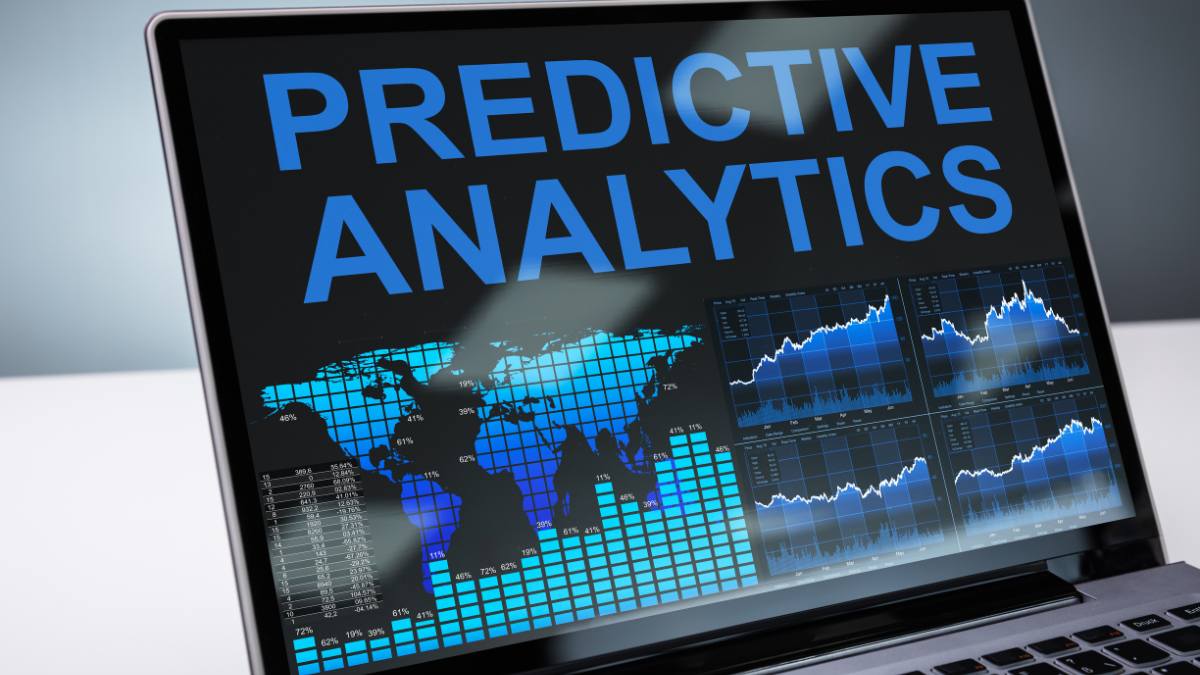Quick Overview: Predictive analytics in marketing uses historical customer and campaign data to forecast behavior, optimize spend, reduce churn, and personalize outreach, delivering smarter and more cost‑effective campaigns.
Table of Contents
What is Predictive Analytics in Marketing?
Predictive analytics is about using past data to make smart guesses about the future.
In marketing, this means looking at customer behavior, campaign performance, transaction history, and other data points to predict what someone might do next, whether they’ll buy again, unsubscribe, respond to a new offer, or even go completely quiet.
Now, it’s important to clarify how this differs from other types of analytics. Descriptive analytics looks at what happened. Diagnostic analytics goes a bit deeper to explain why it happened. Predictive analytics? It’s forward-looking. It asks, What’s likely to happen next?
Here’s a basic breakdown:
- Descriptive: “Sales dropped in March.”
- Diagnostic: “Sales dropped because fewer returning customers made purchases.”
- Predictive: “Customers who haven’t purchased in 30+ days are at high risk of churning.”
It’s less about reading reports and more about reading the signals.
The Main Techniques Used
There are a few methods that sit at the heart of predictive analytics. Some are fairly technical, others are surprisingly straightforward:
- Predictive Modeling: You build models using past data to forecast future outcomes. Pretty standard in everything from eCommerce to SaaS.
- Classification: Grouping things into categories like “likely to convert” or “high risk of churn.”
- Clustering: Useful for segmentation, finding customers who behave similarly, so you can target them more accurately.
- Time-Series Forecasting: This one’s big for trend-based predictions, seasonal spikes, sales cycles, etc.
These methods are powered by machine learning in many cases, but that doesn’t mean you need to be a data scientist to understand or use them. Tools are getting more intuitive, and plenty of platforms now build these models for you.
Also Read: Importance of Analytics in Performance Marketing
How is Predictive Analytics Used in Marketing Today?
Predictive analytics isn’t some futuristic idea. Brands are already using it, daily, to fine-tune everything from ad budgets to what product gets shown to a user.
Here’s where it’s showing up the most:
1. Predicting Customer Behavior
One of the biggest wins here is knowing which customers are on the verge of dropping off. Instead of reacting after someone churns, predictive analytics can flag them in advance. That gives marketers a chance to step in with the right message or incentive.
Companies like Verizon have done this well, using churn models to identify at-risk subscribers and proactively keep them around.
Another example is predicting who’s most likely to buy again soon. Instead of hitting everyone with a promo, you can target just the high-intent group.
2. Personalization That Goes Way Beyond “Hi [First Name]”
True personalization isn’t just about names in emails. It’s about showing the right product, offer, or message at the right moment.
Netflix is the gold standard here. The platform uses predictive models to recommend shows before users even search. “House of Cards” was greenlit largely based on what their data told them, and it paid off. Today, over 80% of what people watch on Netflix comes from recommendations.
Amazon’s another example. Their product suggestions are driven by collaborative filtering, a predictive technique that accounts for roughly 30% of their sales.
This level of personalization isn’t just about relevance, it’s also a huge driver of revenue.
3. Smarter Demand Forecasting
Retailers like Walmart and platforms like Amazon rely on predictive analytics to manage inventory. It’s not just about avoiding out-of-stocks (though that’s important), but also aligning marketing efforts with what’s actually available or about to be in demand.
For example, Walmart often adjusts promotions based on upcoming weather events or local happenings. If there’s a heatwave coming, you can bet they’re forecasting spikes in certain product categories, and planning their ads accordingly.
Even brands like Blue Apron use similar forecasting to manage ingredients and reduce waste.
4. Better Audience Segmentation
This is where things get a little controversial, but still powerful.
You’ve probably heard of the Target pregnancy case. Their analytics team noticed subtle shifts in buying behavior, unscented lotion, vitamins, etc., and began sending maternity-related promotions before some customers had even announced the news. One father famously got upset when his teenage daughter started receiving these offers… until he realized Target’s data was right.
The point isn’t to be creepy. It’s to understand that behavior leaves clues, and predictive models can pick up on them early. When used thoughtfully, this kind of segmentation can create highly relevant campaigns that actually convert.
5. Campaign Optimization in Real Time
With tools like Google Analytics 4, marketers can now build audiences based on predicted outcomes, like “likely to purchase soon” or “likely to churn.”
McDonald’s Hong Kong used GA4’s predictive features in one of their app campaigns. By targeting predictive audiences and optimizing bids in real time, they saw a 550% increase in app orders and slashed their cost per acquisition by 63%. (Source)
That’s not minor. That’s the kind of performance jump most marketers dream of.
Top Benefits of Predictive Analytics for Marketers
Alright, so we’ve looked at what predictive analytics is and how it’s being used. But let’s talk about what really matters, what do marketers actually get out of this?
Below are some of the clearest, most impactful benefits. And these aren’t just theoretical. Brands are already seeing these results.
1. You Can Spot Churn Before it Happens
Customer churn is expensive, especially when you’re blindsided by it.
With predictive analytics, you can actually identify patterns that typically happen before someone leaves. Maybe it’s fewer logins, no purchases in 30 days, or a drop in email opens. Once those signals are there, you can step in and try to win them back.
Verizon, for example, used churn prediction models to reduce subscriber loss. Instead of trying to re-acquire people later (which is way more costly), they shifted focus to the ones showing early signs of disengagement.
That’s a smarter way to retain customers, and protect revenue.
2. Better Personalization
Real personalization goes way beyond just inserting someone’s name into a subject line. We’re talking about recommending the right product, offer, or content based on what someone’s actually likely to care about.
Netflix is a solid example here. Over 80% of what people watch comes from recommendations. And those suggestions? Powered by predictive models trained on viewing behavior.
Same with Amazon. Their recommendation engine, built on predictive analytics, drives up to 30% of their total sales.
This kind of personalization isn’t a gimmick; it’s good business.
3. Improved Demand Forecasting (So You’re Not Wasting Money)
If you’ve ever run a campaign only to realize the product sold out, or worse, that no one wanted it, that’s where predictive analytics can help.
It can forecast demand based on seasonality, trends, geography, and even weather. Walmart uses this all the time. If a storm’s coming, they adjust their inventory and ads accordingly. They don’t guess, they prepare.
Blue Apron does something similar, predicting meal kit orders so they don’t overbuy perishable ingredients.
Marketing that’s in sync with the supply chain? That’s the future.
4. Higher ROI, Lower CPA
This might be the biggest draw for a lot of marketers. When campaigns are powered by predictions, who’s likely to buy, who’s likely to bounce, you stop wasting spend on the wrong audiences.
Take McDonald’s Hong Kong again. They used Google’s predictive audiences in GA4 to build a smarter campaign strategy. Result? 550% more app orders and a 63% drop in cost per acquisition.
That’s not a tiny optimization. That’s a campaign flipping its economics entirely.
5. Smarter Segmentation = Better Targeting
Predictive models let you group people based on likely behavior, not just demographics or interests. That means you can build more relevant segments and talk to them in ways that actually land.
Macy’s has used predictive segmentation to identify high-value customers and build campaigns just for them. Target, as mentioned earlier, went deep into life-stage prediction. While that sparked privacy debates (for good reason), it also proved how powerful predictive segmentation can be when used responsibly.
The upside? Higher engagement. Better conversion rates. Campaigns that feel less like guesswork and more like precision.

Enroll Now: AI Marketing Course
Real‑World Brand Examples
If all of this still feels a little abstract, let’s bring it down to earth. These are actual companies using predictive analytics in their marketing, not just big ideas floating around in theory.
1. Netflix: Predicting What You’ll Watch Next
Netflix is basically built on predictive analytics. From what shows you’re shown first, to the thumbnails you see, to what gets recommended, almost all of it comes from analyzing your viewing habits and comparing them to millions of others.
One of their biggest success stories? House of Cards. Before they even filmed it, their data told them it had a strong shot at working, based on director popularity, genre preferences, and Kevin Spacey’s fan base at the time. So they greenlit the show, and it took off.
Today, more than 75% of all watch time on Netflix comes from these recommendations.
2. Amazon: Personalization That Drives Revenue
If you’ve ever wondered how Amazon seems to always show you something you didn’t even realize you wanted, thank predictive analytics.
They use collaborative filtering (a type of predictive model) to recommend products based on what you’ve browsed or bought, and what others with similar behavior bought. That engine is responsible for up to 30% of Amazon’s sales. (Source)
It’s not just helpful, it’s strategic.
3. Walmart: Predicting Demand at Scale
Walmart deals with insane volumes of data, weather patterns, local events, holiday schedules, foot traffic, and they use all of that to forecast what people will buy and when.
So if rain’s coming to a certain region, they’ll stock more umbrellas and cut back on sunglasses. But what’s smart is they don’t just adjust inventory, they also tweak ad campaigns to match.
Marketing and supply chain move in sync. That’s the power of prediction at scale.
4. Target: Getting Personal (Sometimes Too Personal)
This one’s famous, and a little controversial.
Target used customer purchase data to predict when someone might be pregnant, based on subtle shifts in buying habits (think fragrance-free lotion, vitamins, etc). One teenager started receiving maternity ads before she’d told her family. Her father got upset, then apologized when he realized the data had spotted something real.
The takeaway? Predictive analytics can identify life events early. When used with care, it’s incredibly effective. But when it crosses a line, it becomes a privacy issue. Brands have to walk that line responsibly.
Also Read: Top Marketing Analytics Trends to Watch
Step-by-Step Guide: How to Implement Predictive Analytics in Marketing
It’s easy to look at these big brand wins and feel like this kind of marketing is out of reach. But it’s not. You don’t need a huge team or enterprise software to start experimenting with predictive analytics.
Here’s a simple way to get going.
Step 1: Define the Goal
Start with one specific use case. Don’t try to predict everything.
- Are you trying to reduce churn?
- Want to predict which leads are most likely to convert?
- Hoping to forecast demand for your next campaign?
Pick one clear goal. That’ll help you focus your data efforts.
Step 2: Gather Your Data
You’ll need data from a few sources. Usually:
- Your CRM (customer behavior, transactions)
- Website analytics
- Email platform
- Any third-party or external data that adds context (like seasonality or location)
Make sure this data is clean, consistent, and connected. Otherwise, the models will be flying blind.
Step 3: Choose a Modeling Technique
There are a few different approaches depending on your goal:
- Logistic regression: Good for binary outcomes like “Will this user churn?”
- Decision trees: Easy to interpret, often used in campaign response modeling
- Time-series models: Great for forecasting sales or demand over time
- Bayesian models: Useful for attribution modeling, helps figure out which marketing channels are really driving conversions
Step 4: Train and Test the Model
Once you have a model, you need to train it using historical data, then test it on a separate set to see how accurate it is.
This isn’t a one-and-done process. You’ll probably tweak the model a few times before it starts giving reliable results.
Companies like Verizon have used this step to fine-tune their churn prediction with impressive accuracy.
Step 5: Plug it into your Marketing Stack
Once your model works, it needs to drive action. This is where you integrate it with your:
- CRM (for automated triggers)
- Email platform (for personalized flows)
- Ad tools (like GA4 predictive audiences or Facebook lookalikes)
Now the predictions are actually doing something, powering campaigns in real time.
Step 6: Monitor, Refine, Repeat
Models drift over time. People change, markets shift, and what worked last quarter might not hold up next month.
Keep an eye on performance. Retrain models with fresh data. Tweak as needed.
Step 7: Layer on Prescriptive Analytics (Optional)
Once you’re getting good predictions, the next level is figuring out what to do about them.
That’s where prescriptive analytics comes in. It helps recommend actions, not just insights.
For example: “This user is 85% likely to churn. Here’s the retention offer that has worked best for similar profiles.”
Now your marketing isn’t just smart, it’s automatic and self-improving.
Also Read: What is Digital Analytics?
Conclusion
Predictive analytics isn’t some futuristic trend, it’s already shaping how smart marketers work today. Whether it’s spotting which customers are about to churn, knowing what product to recommend next, or making sure your ads land at just the right moment, the value is clear. And while the tech behind it might seem complex, the starting point is actually pretty simple: good data, clear goals, and a willingness to test and learn.
You don’t need to be a data scientist to benefit, you just need to think a bit ahead and be open to letting your data guide the way. The brands doing this well aren’t just saving money, they’re building stronger connections, making smarter decisions, and staying one step ahead. That’s what makes predictive analytics such a game-changer for modern marketing. Not because it replaces you, but because it helps you market more like a human, at scale.
TL;DR – Key Takeaways
- Predictive analytics is about using past data to forecast what’s likely to happen next in your marketing.
- Brands like Netflix, Amazon, Walmart, and Target are using it to personalize, retain customers, and forecast demand.
- Main benefits include better targeting, improved ROI, smarter inventory planning, and higher engagement.
- It’s not just for big brands, marketers with clean data and the right tools can start small and scale up.
- To get it right, you need clear goals, the right modeling approach, and a habit of refining based on results.
- AI helps you predict and automate, but it doesn’t replace the need for human marketers.
FAQs: Predictive Analytics in Marketing
1. What is predictive analytics in marketing?
Predictive analytics in marketing means using past customer data to guess what they might do next, like what they’ll buy or when they might leave. It helps brands plan smarter campaigns and make better decisions.
2. What are the benefits of using predictive analytics?
It helps marketers save money, target the right people, and create more personalized experiences. You can predict sales, reduce customer drop-off, and even send better-timed emails or ads. It makes marketing more focused and effective.
3. Can small businesses use predictive analytics too?
Yes, absolutely. You don’t need to be a big brand. Even small businesses can use tools like GA4 or email software with basic predictive features to understand customers better and improve results over time.
4. What tools are used for predictive marketing?
Some popular tools are Google Analytics 4, HubSpot, Salesforce Einstein, Pega, and IBM Watson. These tools use AI to find patterns in customer behavior and help marketers act on them more confidently and quickly.
5. How is predictive analytics different from prescriptive analytics?
Predictive analytics tells you what’s likely to happen. Prescriptive analytics goes one step further and suggests what you should do about it. Both are useful, but prescriptive adds recommendations to the predictions.

